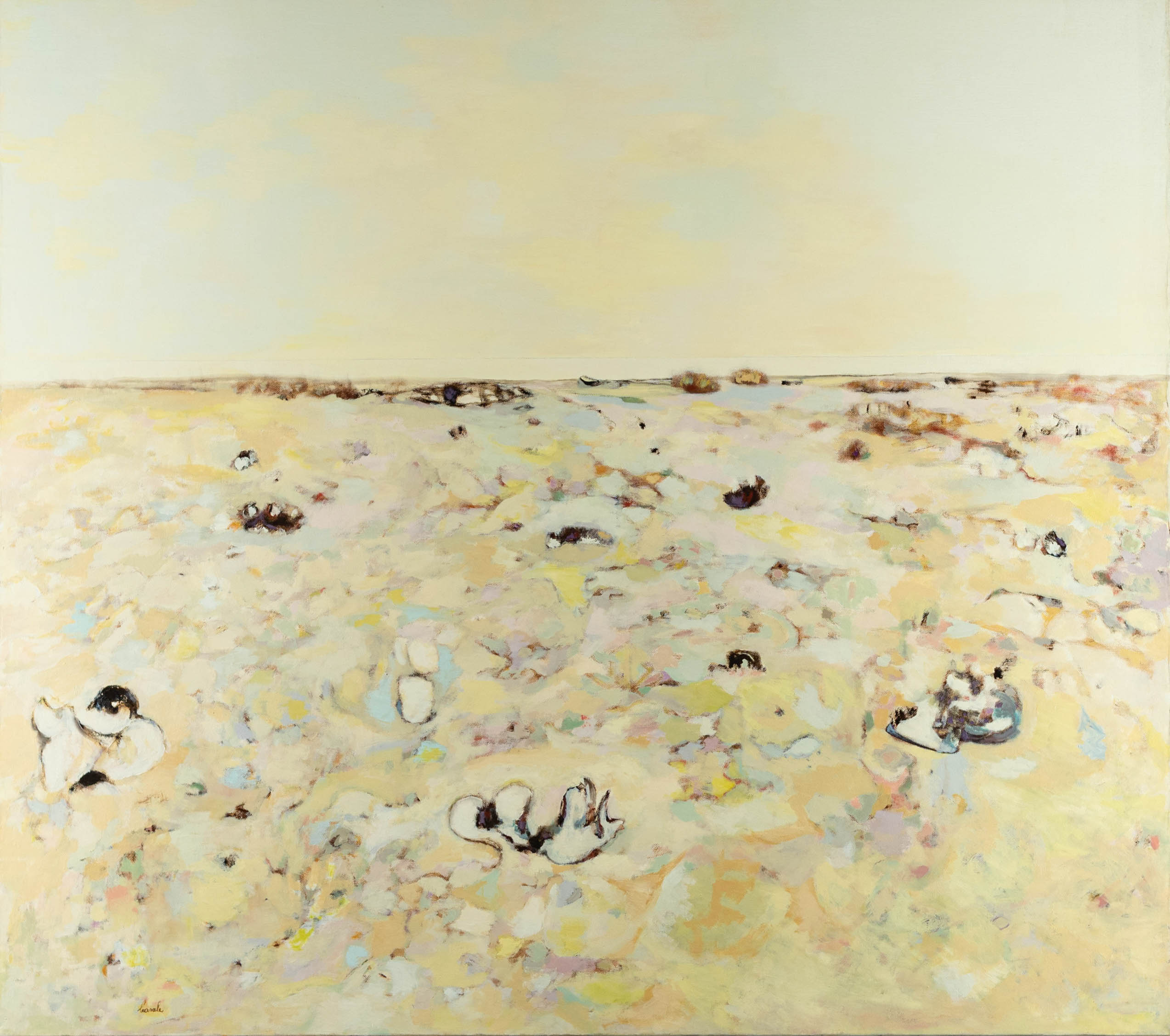
A plethora of repertoire—or rather, an inflated sample (one can only bemoan the dilemma of choosing one nomenclature of distinction over another due to an excess)—characterizes the field of landscape painting, where nineteenth‑century quotations of the umpteenth kind continue to claim the lion’s share, still “inspiring” many illustrators, especially those motivated by hobby and/or by the desire to make a quick buck (perhaps, one might understand, out of a genuine need for income).
A distinctly personal voice, with its own “paraphrases” of the natural environment (often represented by the solitary, silent countryside of Irpinia, or, more generally, by a South that is anything but embarrassed), appears to us as the chosen voice of our Luccan artist—so much so that an inscription by Gastone Breddo encapsulates the judgment as perfectly as could be: “… His paintings appeared to me as a gentle bath of light in which is inscribed a stenography of the soul.”
Born in the Avellino area, in Taurasi about fifty years ago, Casale has been painting for fifteen years and has long since managed to liberate himself—from at least a partial reliance—on certain visual clichés (noble, it must be said) that in the land of Lucca and its environs are hardly ever at risk of falling into disfavor.
The paintings that Alessandro now presents to our attention—rightly hoping for the public’s interest, which ultimately matters most—deceive the eye, not in the sense—absolutely not—of a photographic adherence to the truth, because from a distance they appear as evidence of a pronounced naturalistic abstraction which, in terms of color, seems to have taken a lesson in chiaroscuro; yet, upon closer inspection, one can discern—with a touch of surprise (at least that is what we experienced)—allusions that are not so feeble in their objectivity, in that within the altered glow of a marked and diffused sunlight they offer vivid chromatic cues of “patches,” of aggregates of color.
And so, just as before the painter, while altering and rendering it “unnatural” (or bestowing upon it “the naturalness of the poet”), has come into harmony with “motives”—indeed, the motive—the observer is likewise able to experience that desired sympathetic vibration toward canvases traversed by kaleidoscopic combinations (which are by no means to be mistaken for a sort of… chaotic aesthetic).
Beyond the effect of “defamiliarization,” which indeed constitutes the peculiar core of imaginative languages, this painting for painting’s sake possesses all the hallmarks of sincerity—like any work that, irrespective of technical mastery, centers on a non-histrionic lyricism, an immediate expression of a sentiment far removed from the usual arcadia constructed on a drawing board, from those belated pastoral idylls (once upon a time already targeted by the sarcastic darts of the fierce Scannabue—an artistic pseudonym, preceded by Aristarco—of that controversial Baretti who pronounced: “unmanly little sonnets, tiny little children, feebly effeminate, all full of little loves”).
It goes without saying that there is also the mental underpinning of meditation and ratiocination. After all, every “messenger,” especially of the artistic kind, is often driven—if not induced—by the longing to be different, by the urgency to seek an original word, his own “cipher,” in short, his personal style. But here, in Casale’s work, reason does not come to the detriment of the heart’s inclinations. Moreover, as we have noted in other terms, the representational artist does not challenge that historic institution of communication which is brush painting, nor does he shy away from an (if somewhat externally determined) love for nature as the fundamental source of suggestions—a leitmotif, or, if you prefer, a free theme upon which every possible variation and modification can be enacted, determined both by the perceptive culture of an eye that has certainly not shut itself off from aniconism (or rather, from non‑figuration) and by taste and creativity.
Florence, October 1983
DINO PASQUALI
